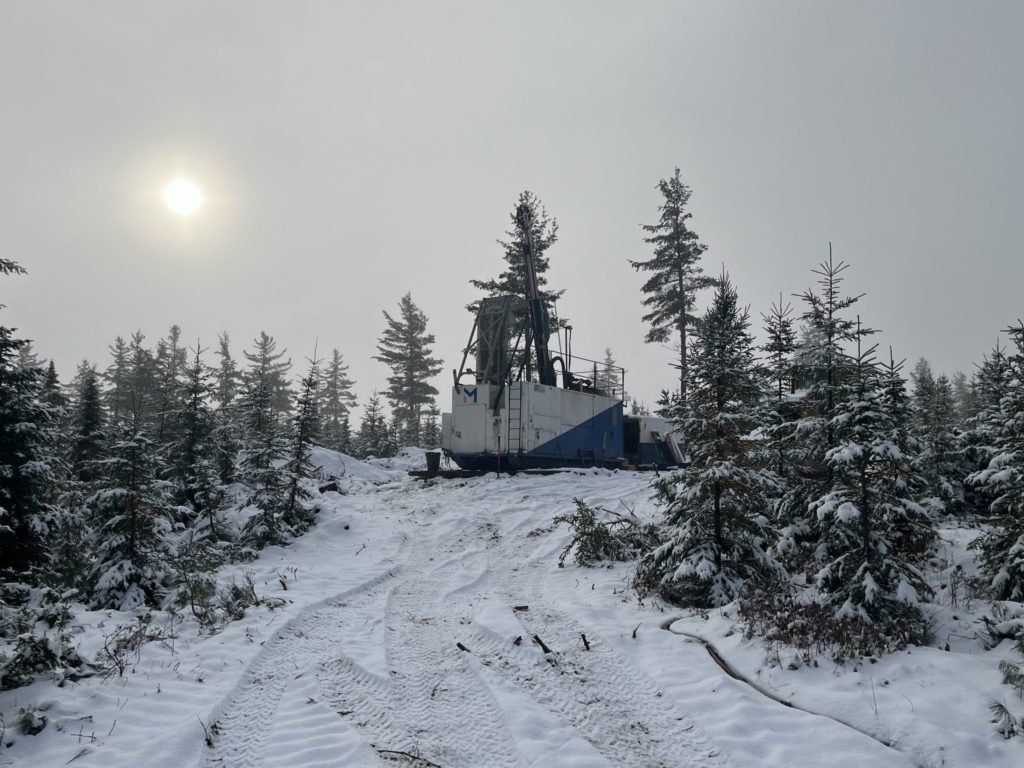JV Article: Nine Mile Metals uses new tech to see deeper


Using new technology to see deep into the Earth, Nine Mile Metals (CSE: NINE) is hoping to unlock the secrets of New Brunswick’s prolific Bathurst Mining Camp.
Most times when exploration companies start drilling a new target, they are taking an educated guess. But as drilling begins at Nine Mile Metals’ California Lake project, the team is more confident than usual of their chances of success after not one, but two cutting-edge technologies highlighted the potential of its latest target.
“When all this new technology lines up over the largest target that we already have, then we’re cautiously optimistic,” CEO Patrick Cruickshank says.
Nine Mile has been active in the historic Bathurst Mining Camp in New Brunswick for the last six years, building up a 130-km2 land package covering four projects located close to Brunswick No. 12, which was one of the world’s largest underground zinc mines.
For over a century, the Bathurst camp has been one of the world’s most prolific mining centres, with miners identifying 45 deposits so far, more than half of which contain more than a million tonnes of metals. Most are volcanogenic massive sulphide (VMS) deposits containing a mix of copper, zinc, lead, gold, and silver highly concentrated in a lens of dense metallic ore. They include the historic Restigouche, Murray Brook, and Caribou zinc-lead mines.
The known VMS deposits can be up to 10 km apart, raising questions and hopes about what lies between them.
However, finding the missing mineralization can be tricky as they can lie several hundred metres below surface, and with the lens standing vertically and presenting a footprint just 500 to 1,000 metres across at surface.
Existing technologies, including airborne electromagnetic surveys or electrophysics, can identify the possible presence of mineral deposits up to 400 metres deep.
But usually geologists don’t know whether they have valuable base metals or worthless pyrite until they begin testing the targets with expensive diamond drilling.
“You got to just kiss a lot of frogs till you hit a VMS deposit,” Cruickshank notes.
To overcome these challenges, Nine Mile has turned to two companies that have developed new ways to look deep below the Earth’s surface without drilling.
Nine Mile was already working with Manitoba-based EarthEX Geophysical Solutions to use its proprietary technology to reprocess legacy MetaTEM data to identify a series of priority targets and target trends across its California Lake project.
This year, the company was approached by Earth Science Services Corp. (ESSCO), another Canadian firm which uses airborne acoustic electromagnetic (EM) surveys to search for mineral targets over wide areas. The technique has been developed from magnetotelluric methods, which are widely used by some of the world’s largest energy companies to find oil and gas deposits.
After carrying out a fixed-wing survey over the Bathurst camp, ESSCO identified a handful of target regions which returned similar results to the Brunswick 12 mine. California Lake’s Number 10 target was the biggest.
Moreover, ESSCO’s suggested targets lined up precisely with the priority areas identified by EarthEX and with known deposits such as Nine Mile’s Wedge mine and a never-before drilled potential extension of Brunswick 12.
ESSCO then used acoustic-transponder reference stations and a drone to fly a local acoustic EM survey to assess the density of the mineral targets. This can help geologists to more quickly discern between the very heavy metallic deposits and much lighter pyrites. Targets can then simply be tested with a single drill hole allowing worthless false flags to be quickly ruled out.
ESSCO then used artificial intelligence to process existing and new data in a model combining both the probable lithology and density of the deposit.
“What these guys are doing should speed the whole process up,” explains Cruickshank.
This work allowed Nine Mile to identify five independent lenses within the Number 10 target, which the company is now drilling. The first is estimated to be more than 700 metres below surface, a challenging depth to hit such a slender target.
But the drilling is being carried out by New Brunswick specialists Les Forages Chapais, a company with decades of experience drilling VMS-style deposits in the Bathurst region. That means negotiating difficult terrain and keeping holes on track hundreds of metres into the ground.
Cruickshank is cautiously optimistic about the technology’s potential.
“The industry has been looking for a technology that can differentiate and filter out what it finds and that's what this company believes they have, so it’s exciting to be the pilot,” the executive explains.
The evidence from ESSCO does not end with target Number 10 but points the way to several other potential mineral deposits, providing Nine Mile with a roadmap for its exploration program for the next three to four years.
The knowledge gives Nine Mile Metals a strategic advantage. ESSCO does not intend to make the technology commercially available for at least the next 18 months. By then, it hopes to hold up its success at the Bathurst camp as a billboard for the rest of the industry.
“Whenever there's new technology, there's a rash of discoveries. And that's where we are now,” Cruickshank explains.
The preceding Joint Venture Article is PROMOTED CONTENT sponsored by Nine Mile Metals and produced in co-operation with The Northern Miner. Visit: www.ninemilemetals.com for more information.
Comments